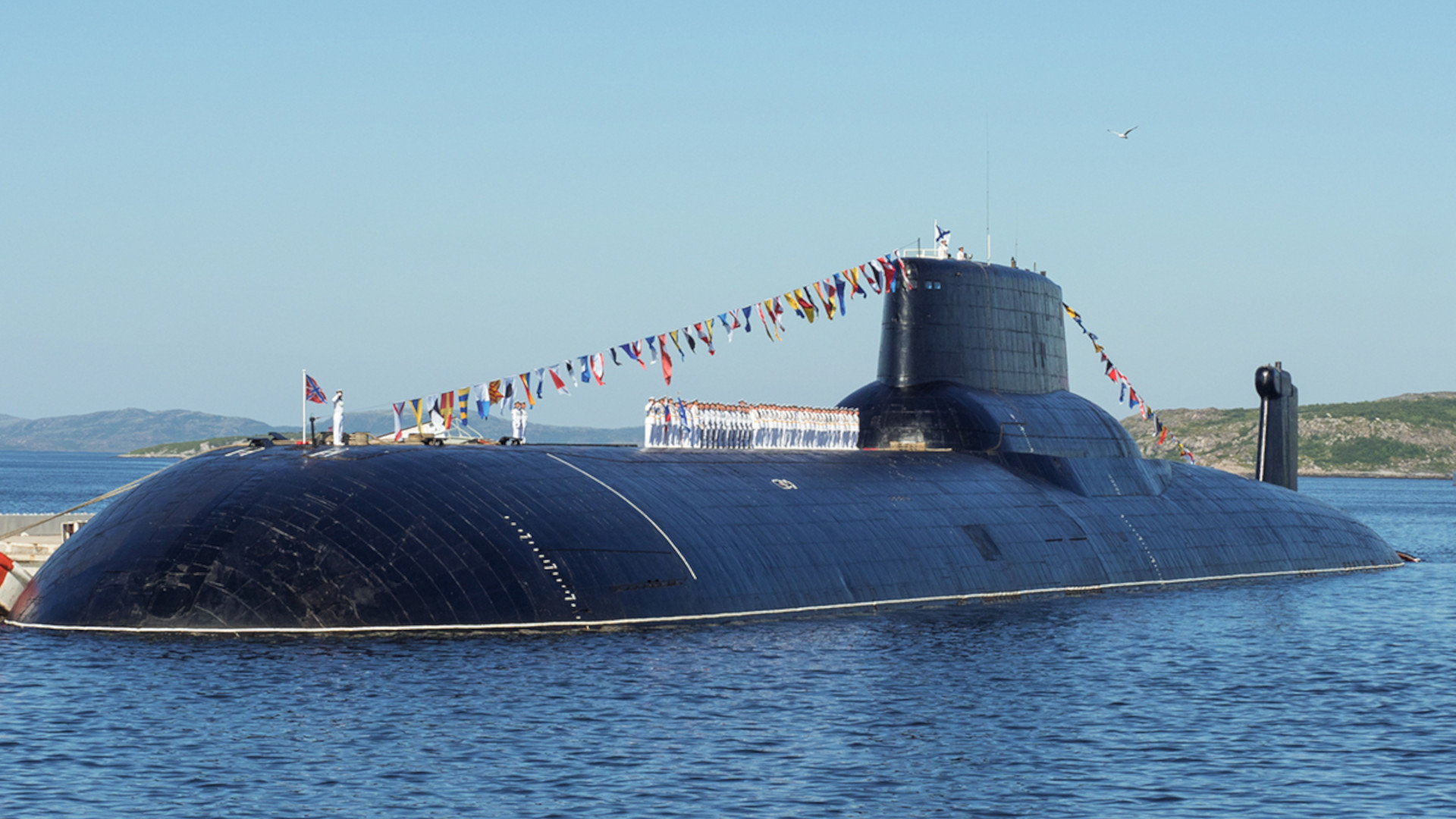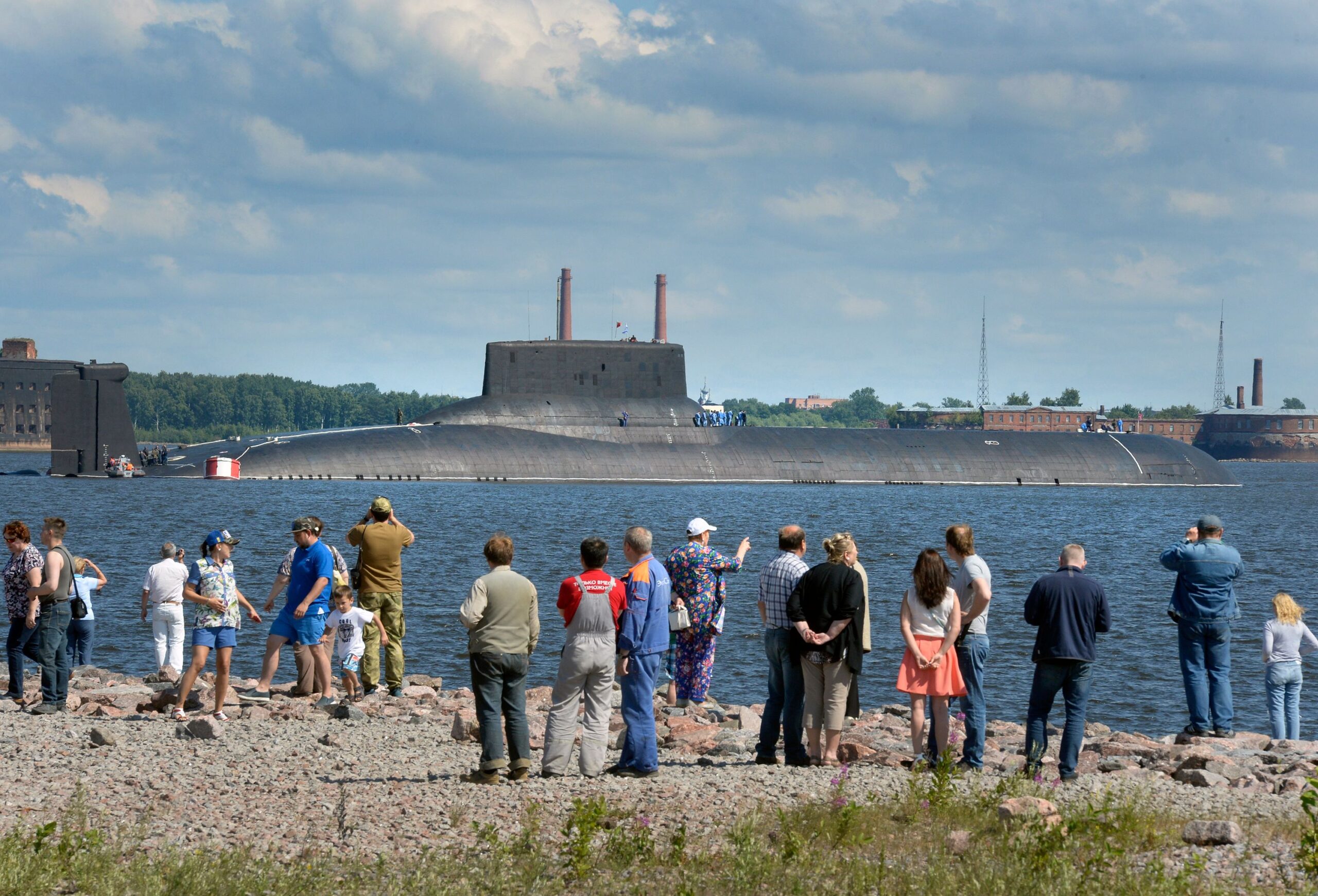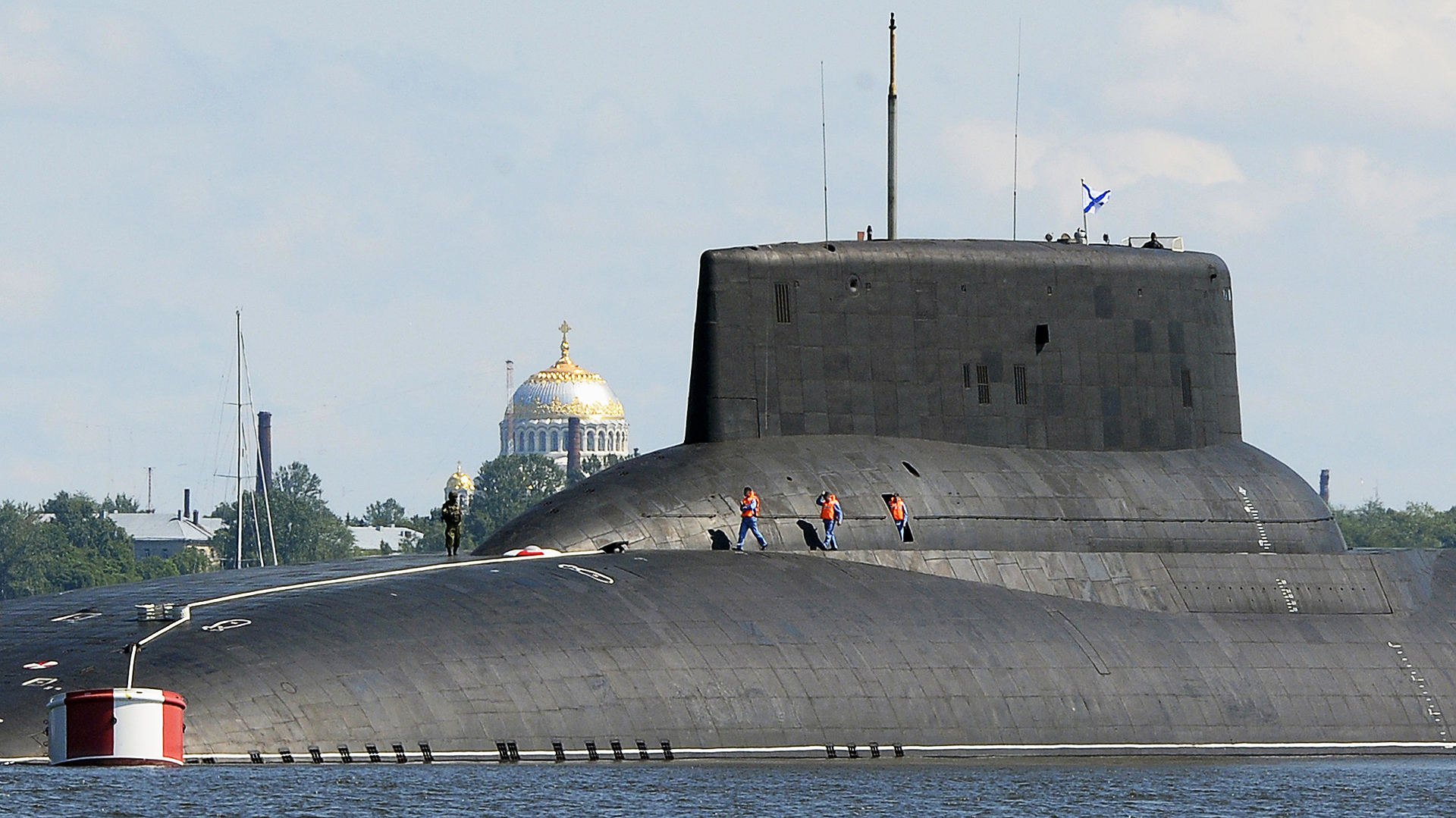The Russian Navy has now formally decommissioned the nuclear ballistic missile submarine Dmitry Donskoy, according to state media. For years now, the submarine has been the sole remaining example of the iconic Typhoon class to be in service. The Typhoon remains the largest submarine of any kind, by displacement, to have ever been built.
Russian state-run media outlet TASS reported Dmitry Donskoy‘s decommissioning yesterday, citing Vladimir Maltsev, head of the All-Russian Fleet Support Movement. Also known simply as the Fleet Support Movement or by the Russian acronym DPF, this is a public organization that advocates for and otherwise promotes the work of the Russian Navy.

RIA Novosti, another Russian state news outlet, had previously reported that the Russian Navy had retired Dmitry Donskoy in July 2022, citing anonymous sources. After that story was published, TASS, reported that this was incorrect, referencing information from unspecified individuals in Russia’s state-run shipbuilding industry and the country’s security services. However, that second report did indicate that a final decision about the submarine’s future could come around the new year.
Dmitry Donskoy, also known by its hull number TK-208, is now set to join two other decommissioned Typhoons at the Russian Navy’s base at Severodvinsk, according to Maltsev. Arkhangelsk (TK-17) and Severstal (TK-20) have languished pier-side there, lashed together for around a decade already. The plan and schedule for the final disposal of all three boats, a process made more complicated by the need to safely get rid of the pair of 190-megawatt-rated OK-650 nuclear reactors on each one, remains unclear.

Maltsev did not say whether Dmitry Donskoy was already supposed to be at the base or, if not, when the submarine might be expected to arrive there. A review of satellite imagery available through Planet Labs does not appear to show Dmitry Donskoy there now, at least as of February 4th. The recently available imagery is not of great quality due to poor weather. The facility is situated in northwestern Russia relatively close to the Arctic Circle.
The fate of the Dmitry Donskoy is of course of great interest given the boat’s status as the last Typhoon on active duty. The Soviet Union only ever commissioned six of these monster nuclear ballistic missile submarines between 1981 and 1989. The collapse of the Soviet Union brought a halt to work on a seventh boat and that partially constructed submarine was ultimately scrapped.
Also known as the Project 941 or Akula class to the Soviets – not to be confused with the Project 971 Shchuka-B class that the U.S. military and NATO refer to as the Akula class – the design is just over 574 feet long and displaces approximately 48,000 tons when submerged. By comparison, a U.S. Navy Ohio class nuclear ballistic missile submarine has a submerged displacement of around 20,664 tons, in addition to being 14 feet shorter.

Since the Russian Navy’s introduction of the 604-foot-long Belgorod, the Typhoon class no longer holds the title of being the longest submarine ever. However, the Belgorod was not built from the keel up this way, being instead converted from a Project 949A Oscar II class guided-missile submarine. It is a unique special mission submarine that you can read more about here.
The Typhoon design is also visually distinct with its 20 missile tubes, each designed to hold a single R-39 Rif submarine-launched ballistic missile, arrayed at the bow end and its sail positioned toward the stern. All other nuclear ballistic missile submarines, including those in Soviet and now Russian Navy service, have their missile tubes behind the sail.
The six completed Typhoons, including Dmitry Donskoy, had largely uneventful careers during the Cold War. In 1991, Arkhangelsk, then known only by its hull number TK-17, nearly sunk after suffering a harrowing accident during a planned test launch of an unarmed R-39. The missile exploded in the launch tube, but the boat’s Captain at the time, Igor Grishkov, and its crew were ultimately able to keep it afloat, as you can read more about here.
The Typhoon class did still become one of the Soviet Navy’s most iconic vessels. It’s place in the public consciousness was further helped by Tom Clancy’s now-famous 1984 novel The Hunt For Red October and the 1990 film adaptation of the same name starring Alec Baldwin and Sean Connery. The story centers on a heavily modified fictional subvariant of this submarine, the eponymous Red October.

The collapse of the Soviet Union, coupled with arms control agreements with the United States, saw the Typhoon fleet steadily shrink after 1991. Three of the six submarines – hull numbers TK-12, TK-13, and TK-202 – were withdrawn from service by the end of the decade and subsequently scrapped.
As already noted, Arkhangelsk and Severstal have been out of service for years now, too, awaiting a similar fate. Dmitry Donskoy has itself long been relegated to research and development, test and evaluation, and training activities. It had been modified in various unique ways to support this work, including to enable it to fire new RSM-56 Bulava nuclear submarine-launched ballistic missiles to help with the development of that weapon. The submarine did notably make an appearance at the Navy Day celebrations in St. Petersburg in 2017.
In 2021, Dmitry Donskoy‘s future as a niche test and training platform seemed bright with reported plans to keep it in service in these roles through at least 2026. It appeared to have still been conducting such work as recently as June 2022.
It’s hard to say exactly what may have happened in the interim, but Russia is now under crippling international sanctions as a result of its nearly year-long war in Ukraine. The Russian military has lost substantial amounts of materiel in the course of the conflict already, which will need to be recapitalized in some fashion.
It’s not hard to see how this may have called into question the value of continuing to operate and maintain a single example of an already very costly and complex submarine. Even before Russia launched its all-out invasion of Ukraine in February 2022, the country’s government had shown a willingness to delay or even cancel major military projects in order to reallocate funding to higher-priority efforts.

With this in mind, Russian authorities continue to show a commitment to acquiring new Borei-A class nuclear ballistic missile submarines. Fleet Support Movement head Maltsev noted in his comments to TASS that the name Dmitry Donskoy is already expected to be applied to a future Borei-A class boat that is set to enter service by the end of the decade.
Without an official confirmation from the Russian Navy or the Russian Ministry of Defense, there remains a possibility that the fate of Dmitry Donskoy is still not yet final. The submarine could of course technically still be in service, but have been decommissioned in all but the formal sense.
No matter what, with a new Borei-A class Dmitry Donskoy already on the horizon, the era of the Typhoon is clearly coming to a close, if it hasn’t happened already.
Contact the author: joe@thedrive.com
